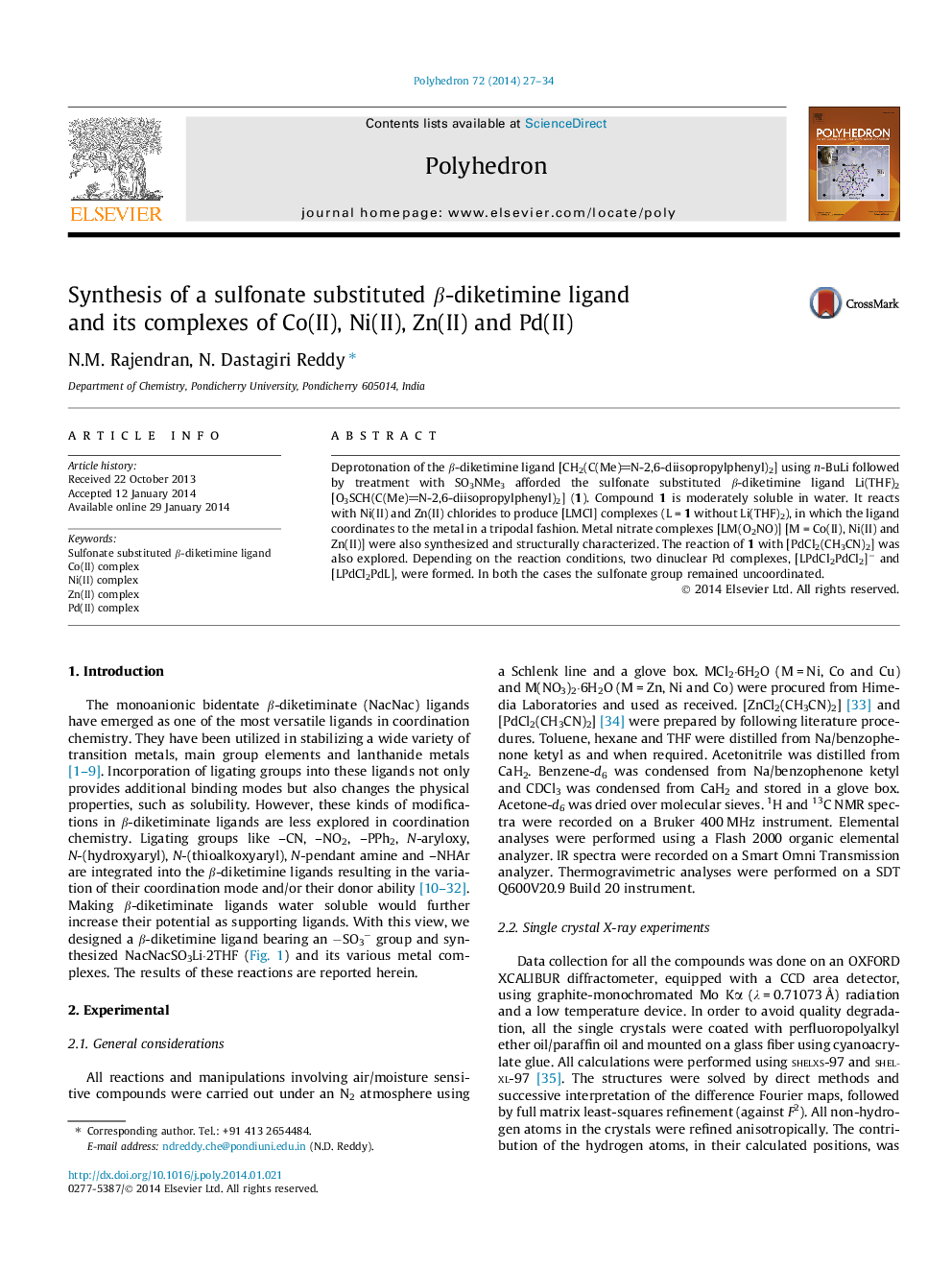| Article ID | Journal | Published Year | Pages | File Type |
|---|---|---|---|---|
| 1335398 | Polyhedron | 2014 | 8 Pages |
Deprotonation of the β-diketimine ligand [CH2(C(Me)N-2,6-diisopropylphenyl)2] using n-BuLi followed by treatment with SO3NMe3 afforded the sulfonate substituted β-diketimine ligand Li(THF)2[O3SCH(C(Me)N-2,6-diisopropylphenyl)2] (1). Compound 1 is moderately soluble in water. It reacts with Ni(II) and Zn(II) chlorides to produce [LMCl] complexes (L = 1 without Li(THF)2), in which the ligand coordinates to the metal in a tripodal fashion. Metal nitrate complexes [LM(O2NO)] [M = Co(II), Ni(II) and Zn(II)] were also synthesized and structurally characterized. The reaction of 1 with [PdCl2(CH3CN)2] was also explored. Depending on the reaction conditions, two dinuclear Pd complexes, [LPdCl2PdCl2]− and [LPdCl2PdL], were formed. In both the cases the sulfonate group remained uncoordinated.
Graphical abstractThe tridentate ligand NacNacSO3Li·2THF was synthesized and treated with MX2 (M = Co, Ni and Zn; X = Cl or NO3) to obtain [LMX] metal complexes, in which the ligand NacNacSO3− shows a typical tripodal coordination mode. The ligand produced two dinuclear [LPdCl2PCl2]− and [LPdCl2PdL] complexes when reacted with [PdCl2(CH3CN)2].Figure optionsDownload full-size imageDownload as PowerPoint slide
